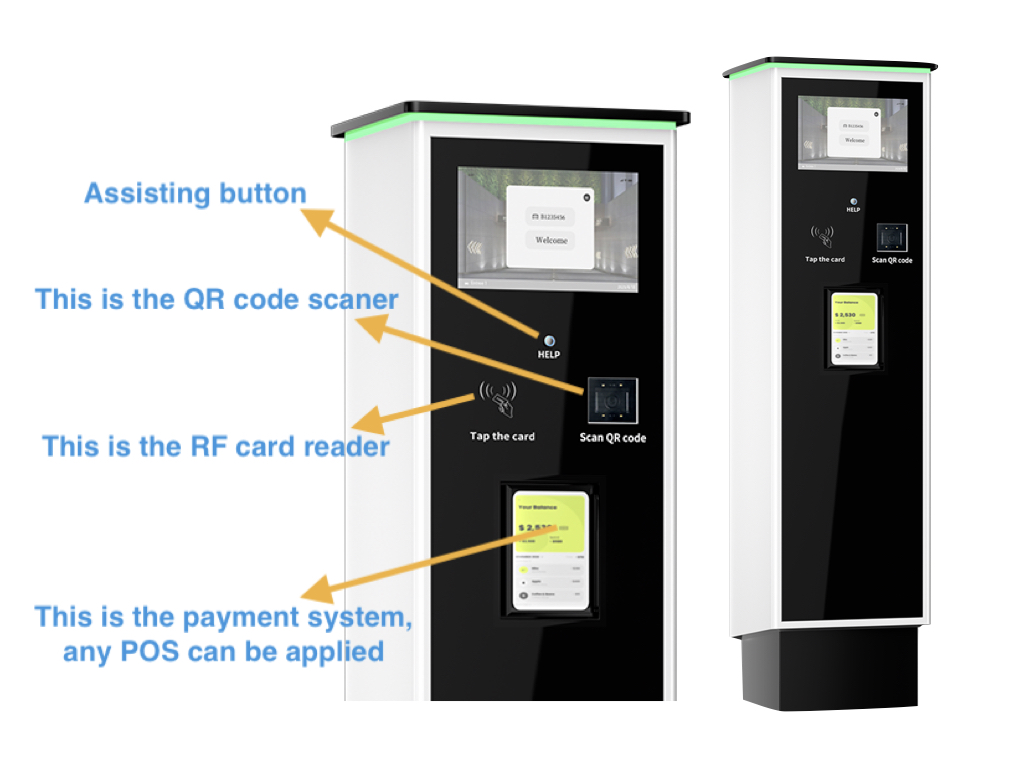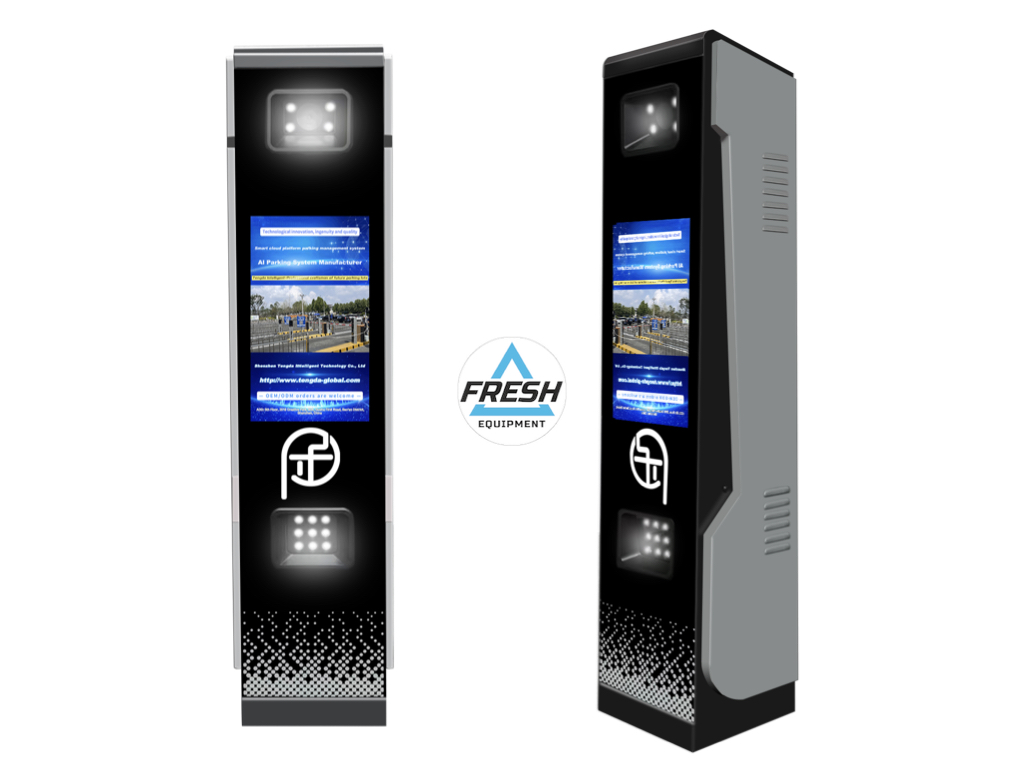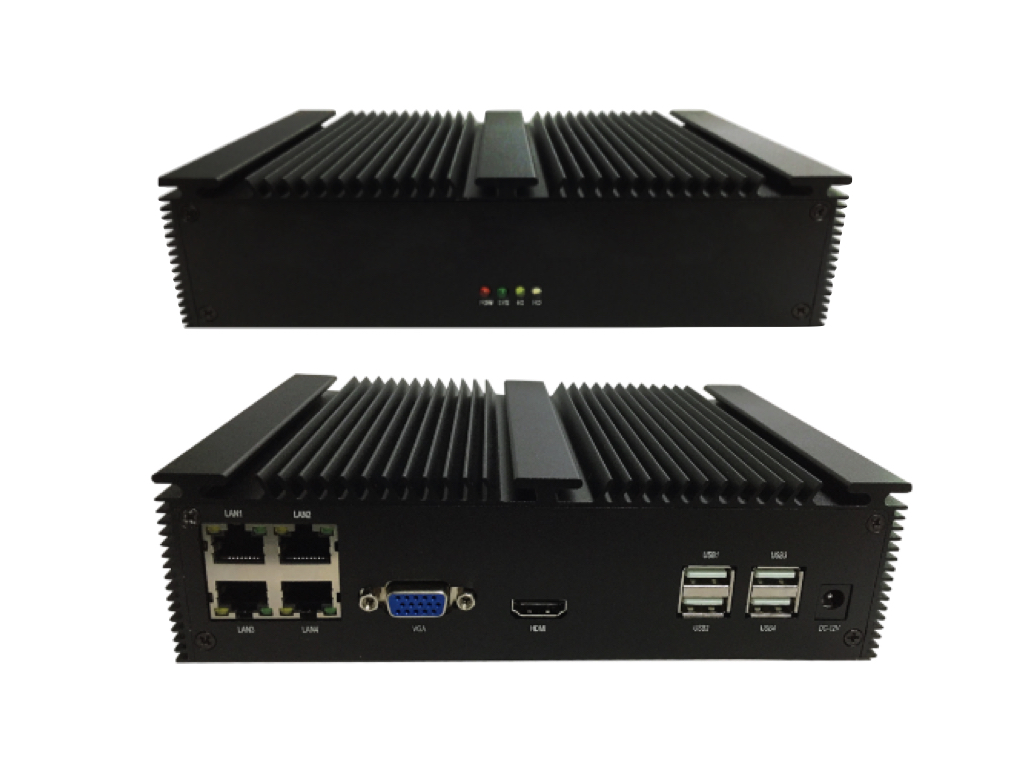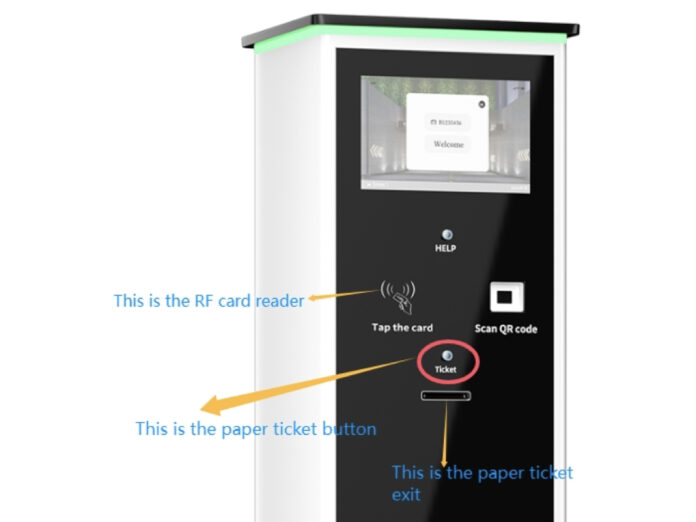Parking Payment Machine: The Future of Parking Management
Parking payment machines are transforming how parking facilities operate, offering advanced solutions that simplify payments, improve security, and enhance the overall user experience. From busy urban centers to private parking lots, these machines play a vital role in managing parking efficiently and effectively. Let’s dive into how these machines work, their key features, and why they are becoming an essential tool for modern parking management. You can order a parking management machine from Fresh USA.
What is a Parking Payment Machine?
A parking payment machine is a self-service device designed to handle payments for parking spaces. It is a crucial part of the infrastructure in parking facilities, allowing users to pay for parking time using various methods such as credit cards, mobile payments, or cash. These machines provide a quick and easy way to manage parking transactions, ensuring a smooth flow of vehicles while minimizing human intervention.
Types of Parking Payment Machines

There are several types of parking payment machines, each catering to different needs and settings:
- On-Site Payment Machines: Located at the parking facility, these machines allow users to pay directly at the spot. They accept various payment methods, including cash, credit/debit cards, and contactless payments.
- Remote Payment Options: These include mobile apps and online platforms that enable users to pay for parking remotely. Users can reserve a spot, pay in advance, or extend their parking time without physically visiting the payment machine.
- Multi-Functional Payment Machines: Advanced machines that combine multiple functions, such as accepting payments, issuing tickets, and reading RFID cards, all in one device. They are integrated with parking management systems for real-time data processing and reporting.
How Do Parking Payment Machines Work?

Parking payment machines are designed to be user-friendly and efficient. Here’s a step-by-step breakdown of how they typically work:
- Entry: When a vehicle enters the parking facility, an automated system (like a License Plate Recognition (LPR) camera) captures the license plate number and records the entry time.
- Payment: At the end of the parking session, the user approaches a parking payment machine and selects their preferred payment method. The machine can read QR codes or RFID cards and calculate the parking fee based on the duration of the stay.
- Exit: After payment, the machine updates the central database, signaling the exit gate to open and allowing the vehicle to leave.
Key Features of Advanced Parking Payment Machines
Modern parking payment machines come with several advanced features to enhance efficiency and user experience:
- User-Friendly Interfaces: Clear displays, intuitive navigation, and multi-language support make these machines accessible to all users.
- Multi-Payment Options: They support a range of payment methods, including credit cards, mobile payments, and cash, accommodating various user preferences.
- Real-Time Data Processing: Immediate updates to the central database ensure accurate records of parking transactions, helping to prevent errors and fraud.
Benefits of Using Parking Payment Machines
Parking payment machines offer numerous benefits for both parking operators and users:
- Improved Operational Efficiency: Automates the payment process, reducing the need for staff and speeding up transactions.
- Enhanced Security and Fraud Prevention: Secure transactions, data encryption, and anti-tampering features help protect against fraud and theft.
- Better User Experience: Fast, easy payments and multiple options improve customer satisfaction and encourage repeat visits.
Integration with Parking Management Systems

Parking payment machines are designed to integrate seamlessly with broader parking management systems. This integration allows for:
- Compatibility with AI Management Systems: Real-time data transfer and synchronization enhance decision-making and operational efficiency.
- Connectivity with Central Databases: Ensures all transaction data is securely stored and accessible for reporting and analysis.
Security Features of Modern Parking Payment Machines
Security is a top priority for parking payment machines. Key security features include:
- Anti-Tampering Measures: Physical protection to prevent tampering or vandalism.
- Data Encryption: Secure encryption protocols protect sensitive data during transactions.
- Remote Monitoring: Allows operators to monitor machine status and transactions remotely, quickly addressing any issues.
Customizable Billing and Payment Methods
Modern parking payment machines offer flexible billing options tailored to different facility needs:
- Flexible Pricing Models: Operators can set hourly, daily, special rates, or dynamic pricing based on demand.
- Support for Multiple Payment Providers: Machines are compatible with a wide range of payment systems, ensuring flexibility for users.
Role of AI in Enhancing Parking Payment Machines
AI plays a crucial role in enhancing the functionality of parking payment machines:
- AI-Powered Data Analysis: Uses real-time data to predict parking trends, adjust pricing, and optimize space utilization.
- Automated Decision-Making: AI helps automate entry and exit processes, reducing wait times and improving efficiency.
The Role of RFID Technology in Parking Payment Machines
RFID technology is integrated into many parking payment machines to improve access control and convenience:
- Reusable RFID Cards: Regular customers or employees can use RFID cards or windshield stickers to enter and exit the facility without needing a new ticket each time.
- Integration with Long-Range RFID Readers: Ensures smooth, automatic entry and exit for authorized vehicles.
Future Trends in Parking Payment Machines
Parking payment machines continue to evolve, with new trends shaping their development:
- Contactless and Touch-Free Payment Options: Increased demand for hygiene has led to the adoption of contactless payment methods, such as NFC and mobile wallets.
- Integration with Smart City Infrastructure: Machines are becoming part of a broader smart city ecosystem, interacting with traffic management systems and public transport.
Challenges and Solutions for Implementing Parking Payment Machines
Implementing parking payment machines can come with challenges:
- Common Issues: Technical glitches, connectivity problems, and user errors are common.
- Solutions: Regular maintenance, staff training, and reliable customer support can mitigate these issues.
Case Studies: Successful Implementation of Parking Payment Machines
Examples of successful implementations show the impact of these systems:
- Urban Centers: Increased revenue and reduced congestion in busy city centers.
- Private Facilities: Enhanced customer satisfaction and streamlined operations.
Choosing the Right Parking Payment Machine for Your Facility
When selecting a parking payment machine, consider:
- Facility Size and Location: Different machines suit different environments, from small private lots to large city centers.
- User Volume and Needs: High-traffic areas may require machines with advanced features like multiple payment options and high-speed processing.
Conclusion
Parking payment machines are revolutionizing parking management, offering advanced solutions that enhance efficiency, security, and user experience. By integrating cutting-edge technology, such as LPR, RFID, and AI, these machines provide a flexible and reliable option for facilities of all types and sizes. As technology continues to evolve, parking payment machines will remain a critical component of modern parking strategies.
FAQs
1. What are the different types of parking payment machines?
There are on-site payment machines, remote payment options (like mobile apps), and multi-functional machines combining several features.
2. How do parking payment machines ensure security?
They use anti-tampering measures, data encryption, and remote monitoring to protect against fraud and unauthorized access.
3. Can parking payment machines be integrated with mobile apps?
Yes, many machines support integration with mobile apps, allowing for remote payments, reservations, and extensions.
4. What is the role of RFID technology in parking payment machines?
RFID technology enables seamless entry and exit for regular users with RFID cards or stickers, enhancing convenience.
5. How do I choose the best parking payment machine for my facility?
Consider factors such as facility size, location, user volume, and the specific features needed for your parking management goals.




